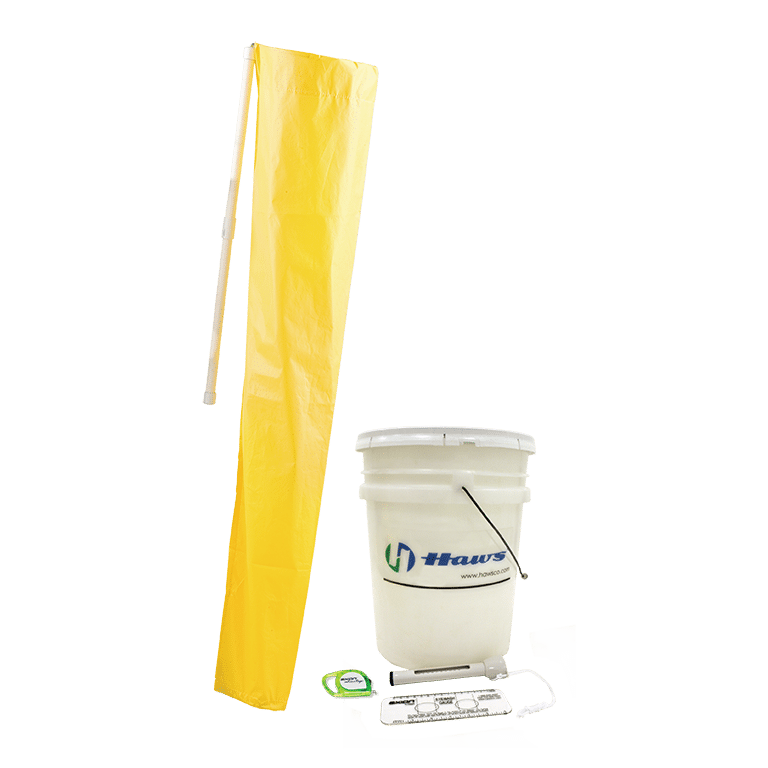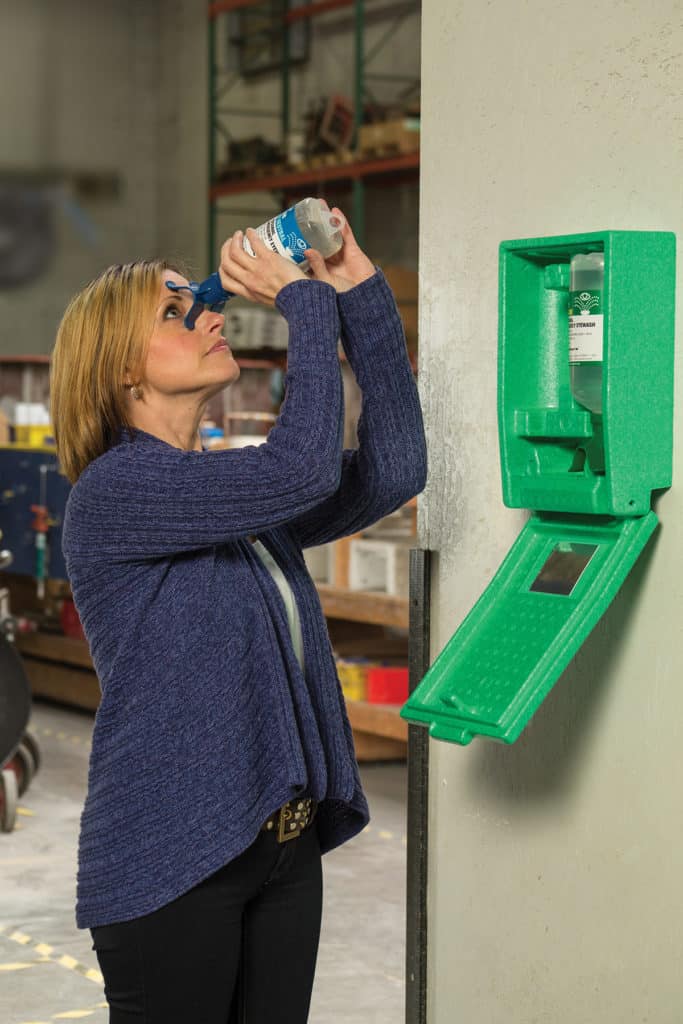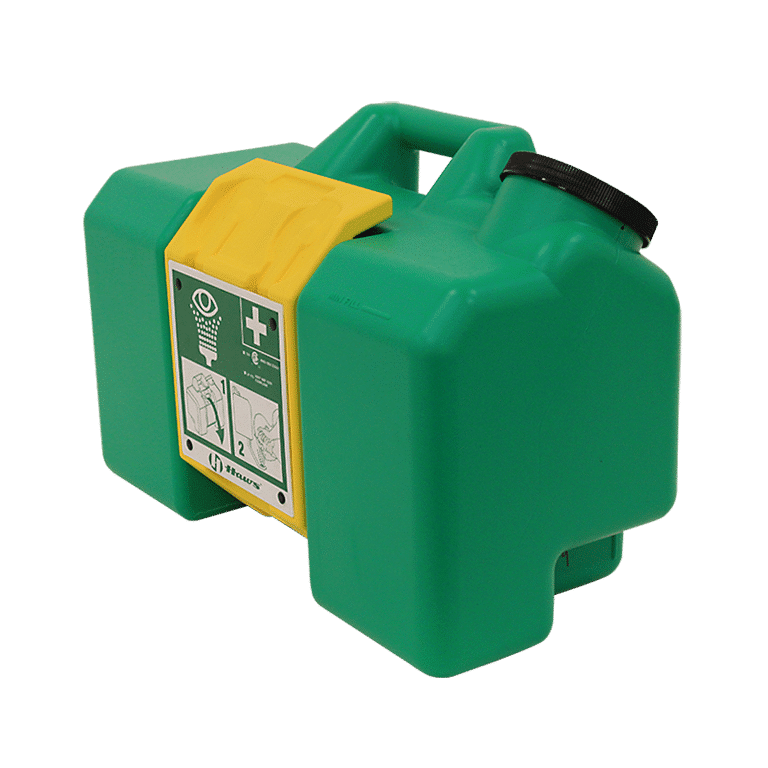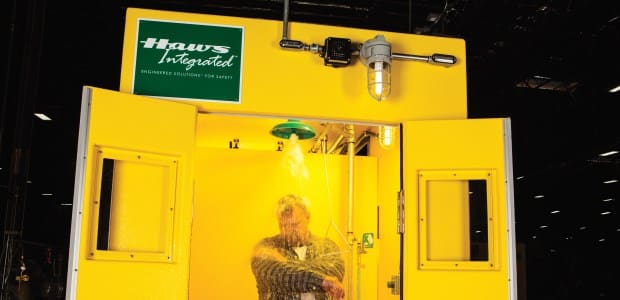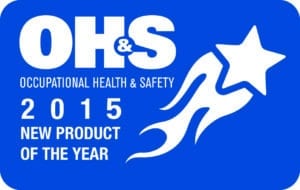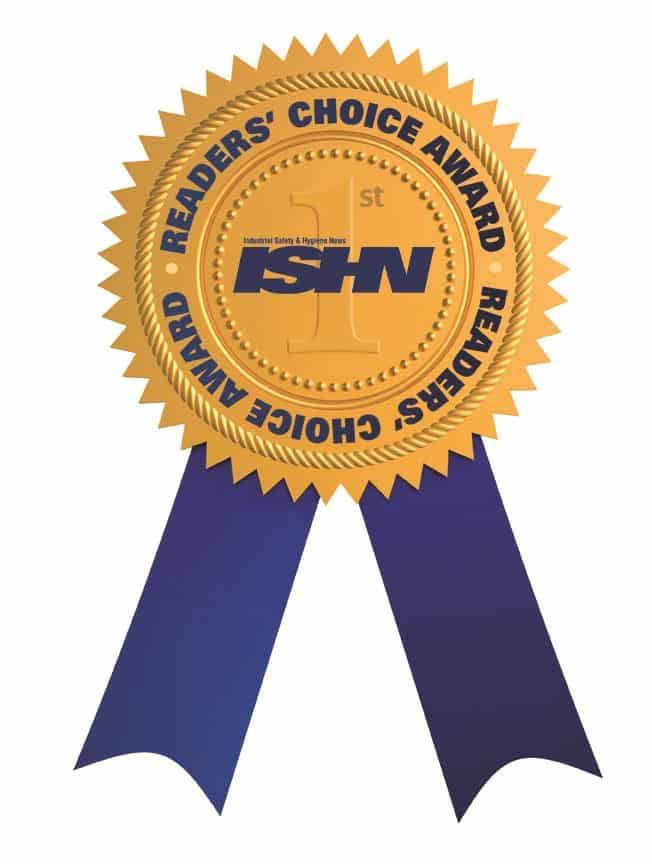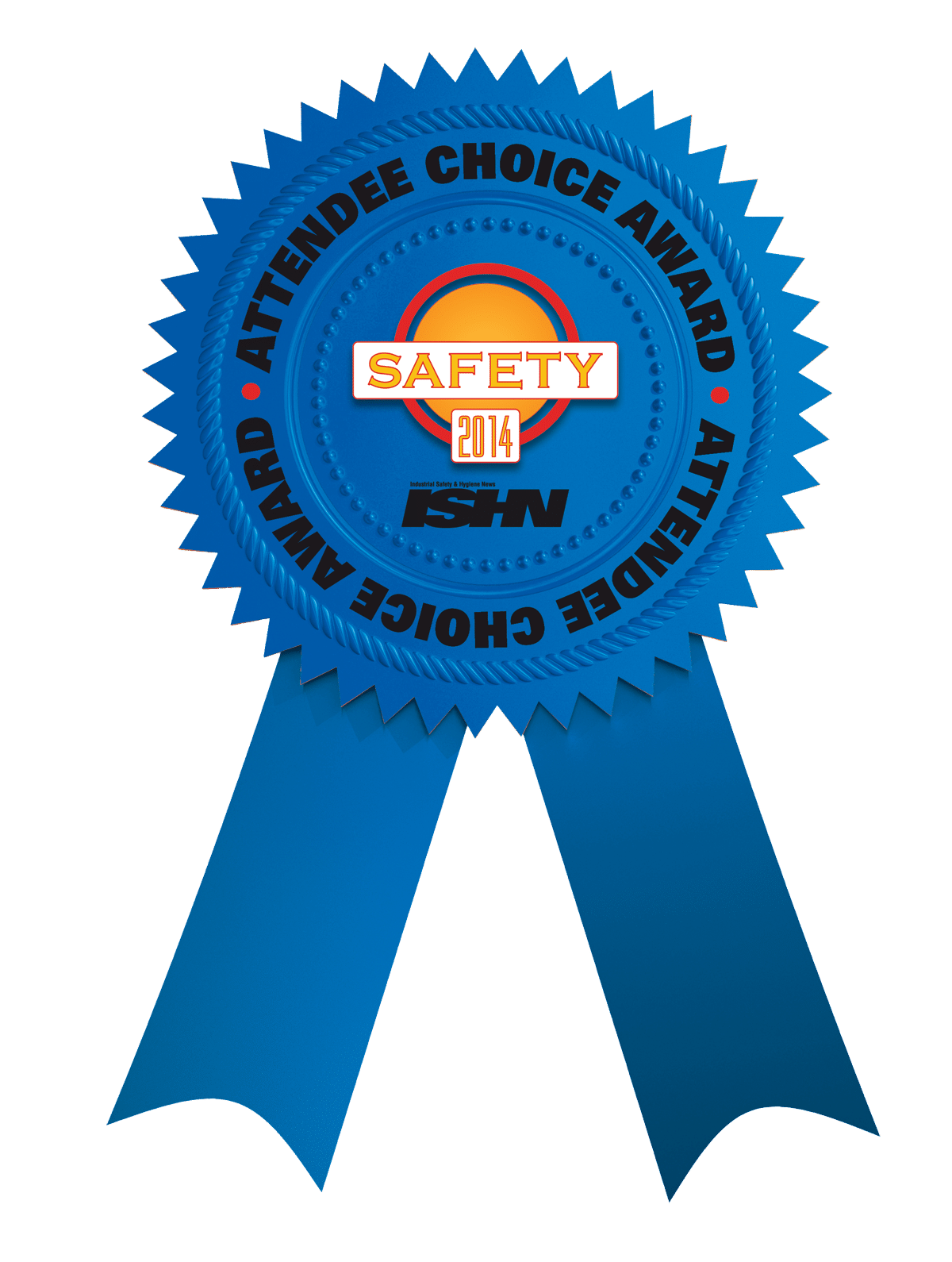The standard guiding the placement, functionality, and maintenance requirements for ANSI/ISEA Shower Eye Wash Testing, which was last revised in 2014. In its current form, it is the clearest and most useful tool for protecting workers from eye, face, and body injuries resulting from caustic and corrosive materials introduced by workplace incidents such as spills, splashes, and blown particulates.
[via OH&S]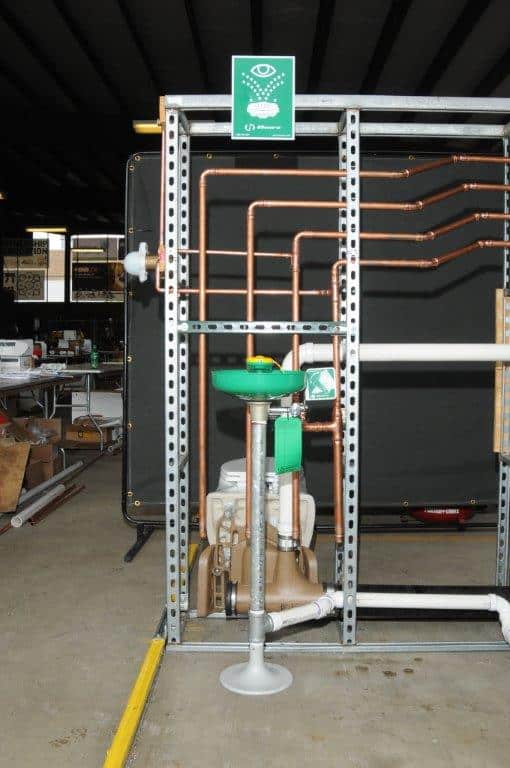
The standard requires stringent testing to be conducted on a regular basis to ensure properly functioning equipment is being provided at all times if an incident were to occur. We should all understand that compliance is not a once-a-year or once-a-month responsibility. Compliance is an all-day, every-day requirement. Accordingly, emergency showers and eyewashes are required by the ANSI/ISEA Z358.1-2014 Standard to be activated weekly, with a more thorough evaluation on an annual basis. This requirement is established in Sections including 4.6.2, 4.6.5.
In practice, emergency response equipment such as eyewashes and showers sometimes falls to the wayside when it comes to maintenance, especially when prioritized against emergency preparedness equipment such as eye protection and fall protection. It's pertinent to know that OSHA does not prioritize or take a backseat when it comes to providing adequate and properly functioning equipment, regardless whether the equipment aids in pre- or post-incident situations. With OSHA fine increases of 80 percent taking effect in August 2016, violations for inappropriate or inadequate eyewash and shower equipment have resulted in penalties of more than $100,000.
Weekly Minimum ANSI/ISEA shower Eye Wash Testing Performance Requirements
The standard for ANSI/ISEA Shower Eye Wash Testing has three minimum requirements for weekly inspections:
- Emergency equipment shall be activated weekly. (Each piece of equipment is required to be activated.)
- Activation shall ensure flow of water to the head(s) of the device. (This would be both the eyewash or eye/face wash head as well as the showerhead.)
- Duration of the activation shall be sufficient to ensure all stagnant water is flushed from the unit itself and all sections of piping that do not form part of a constant circulation system, also known as “dead leg” portions. (The duration is determined by the length of piping where stagnant water could be sitting before it reaches the head(s) of the unit.)
In addition to the above weekly minimum performance checklist required by ANSI/ISEA, it is recommended as a best practice to conduct additional weekly ANSI/ISEA shower Eye Wash Testing functional checks. The purpose of these additional checks is to fully ensure the equipment is operating correctly and is capable of providing proper first aid in the event of an emergency.
Access
- Path of travel to the safety station shall be free of obstructions. (This could include hoses, boxes, and doors.) (Sections 4.5.2, 5.4.2, 6.4.2, 7.4.2)
Emergency Shower
- Shower must deliver a minimum of 20 gallons (75.7 L) per minute. (Sec. 4.1.2, 4.1.4, 7.1)
- The valve shall go from “off” to “on” in one second or less and flushing fluid shall remain on without the use of operator’s hands. (Sec. 4.2, 7.1)
Eye wash / Eye/Face wash
- Outlets shall be protected from airborne contaminants. (Dust covers must be in place.) (Sec. 5.1.3, 6.1.3, 7.1)
- The valve shall go from “off” to “on” in one second or less and flushing fluid shall remain on without the use of operator’s hands. (Sec. 5.2, 6.2, 7.2)
- The flushing fluid of an eyewash or eye/face wash shall cover the areas between the interior and exterior lines of a gauge at some point less than 8 inches (20.3 cm) above the eyewash nozzle. (sec 5.1.8, 6.1.8,7.1)
- Must provide a means of a controlled flow to both eyes simultaneously at a velocity low enough to be non-injurious. (Sec. 5.1.1, 6.1.1, 7.1)
Combination Safety Shower Eye Wash
- Combination unit components shall be capable of operating simultaneously. (When the eyewash or eye/face wash is activated, and then the shower is activated, there should be no “starvation” occurring to either of the heads.) (Sec. 7.3, 7.4.4)
Temperature
- Deliver tepid flushing fluid. (The required temperature range is 60°F - 100°F [16°C - 38°C])(Sec. 4.5.6, 5.4.6, 6.4.6, 7.4.5)
Plumbed Shower & Eye Wash Equipment
As a general statement, all equipment needs to be inspected weekly to ensure that there is a flushing fluid supply and that the equipment is in good repair. If the equipment is of a plumbed design, then it should also be activated weekly to clear the supply line of any sediment buildup and to minimize any microbial contamination due to stagnant water.
Self-Contained Shower & Eye Wash Equipment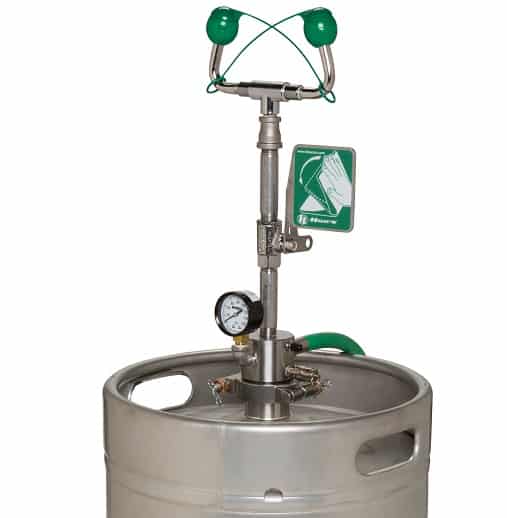
Self-contained, also often referred to as “portable,” emergency response equipment is typically used in locations where there is either no access to water or at highly mobile sites where hazards are mobile.
The ANSI/ISEA requirement for this type of equipment is to be visually inspected weekly to determine if the flushing fluid needs to be exchanged or supplemented (Sections 4.6.3 and others). The units should be maintained as per the manufacturer’s specific model instructions. A majority of self-contained units that use potable water also offer a sterile bacteriostatic additive option to prevent the water from growing bacteria. An exchange of the water and refill of the additive is required every three months for most additive products, as well as rinsing the unit clean between the exchanges. If an additive is not being used, then the water should be exchanged on a weekly basis, at a minimum, with a thorough tank cleaning monthly. On an annual basis, self-contained units are required to undergo the full test just as plumbed units do.
The question is often asked whether a company must hire a certified tester to conduct the weekly and annual inspections. Fortunately, there are no prerequisite or certification requirements to be able to test the equipment, although having a complete understanding of the installation and performance requirements will aid in ensuring conformance. There are various training tools, including Online Competent Person Training, offered by equipment manufacturers and others for individuals to become subject matter experts. This allows company personnel to get familiar with what to look for and how to conduct the tests appropriately. Many companies today opt to have an outside third-party inspection performed for them annually, which provides an added measure of credibility and assurance to the review process.
Facilities that contain hundreds of shower and eyewash units should strive to create as many subject matter experts as possible. Once trained, the weekly checks can be completed rather quickly. Creating facility maps, having full testing kits available, and holding reoccurring training classes can assist in the tedious, yet crucial weekly task.
Worker protection should be a priority in every safety plan and simply providing emergency showers and eyewashes is not enough. It is necessary to inspect, test, and monitor equipment readiness and performance for optimal response.
